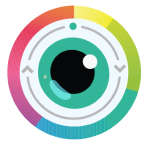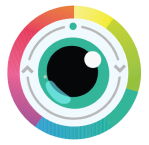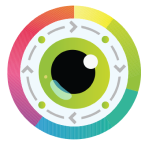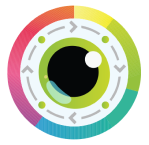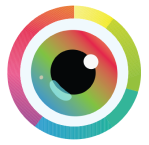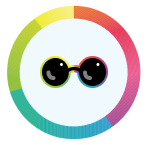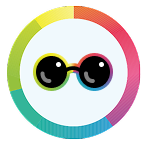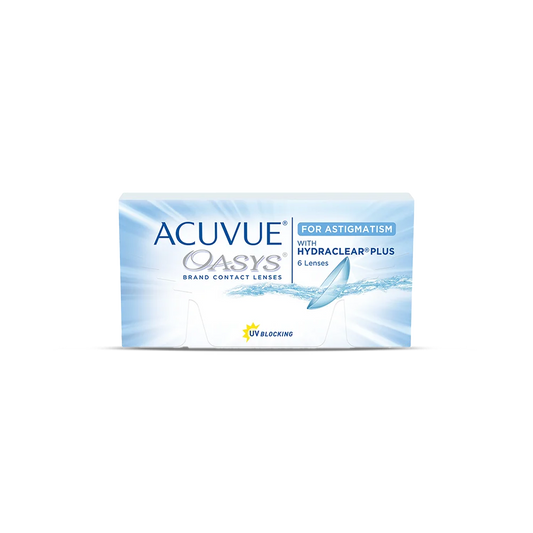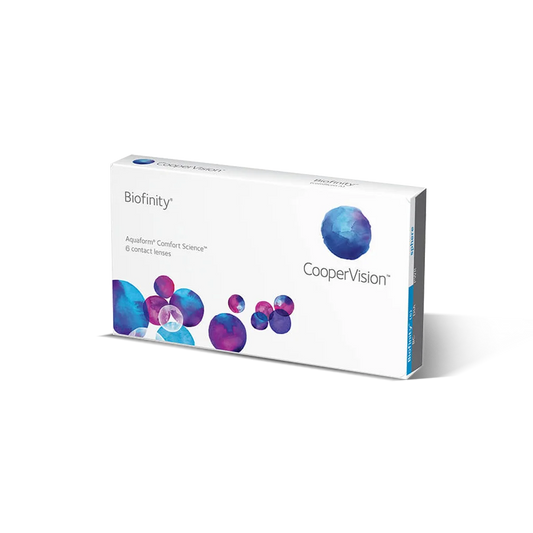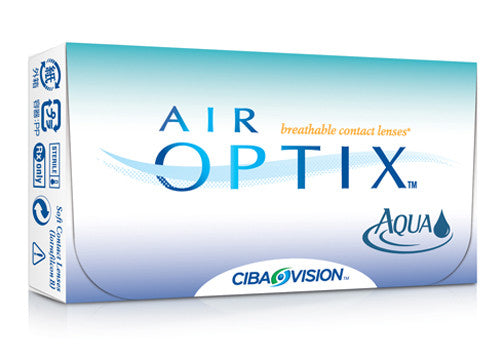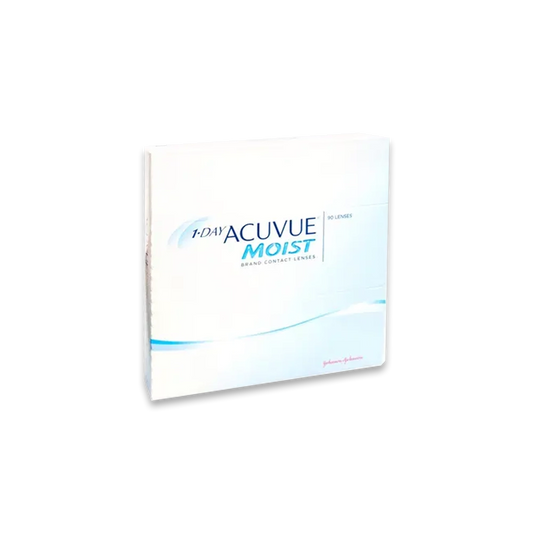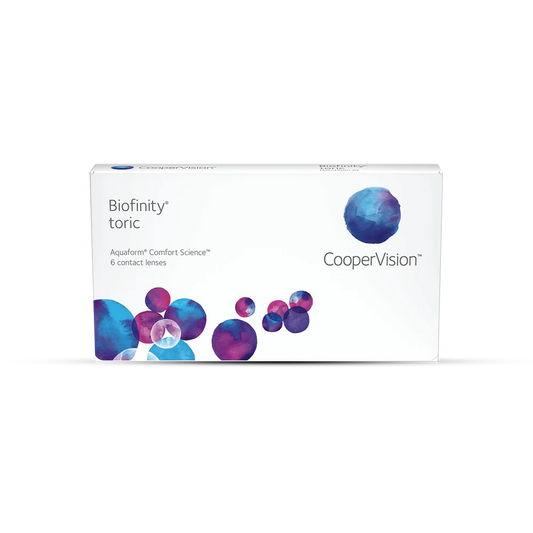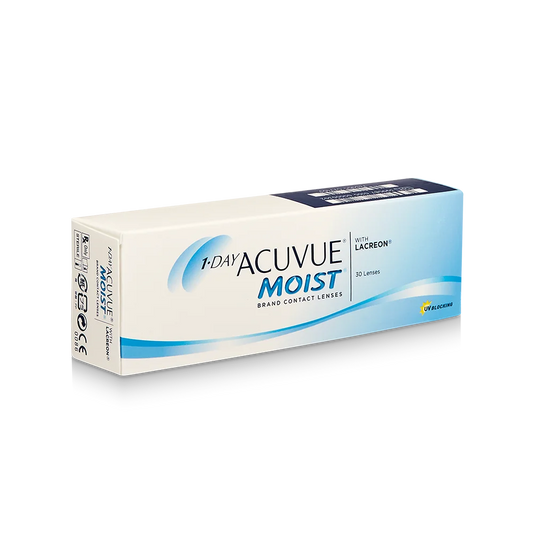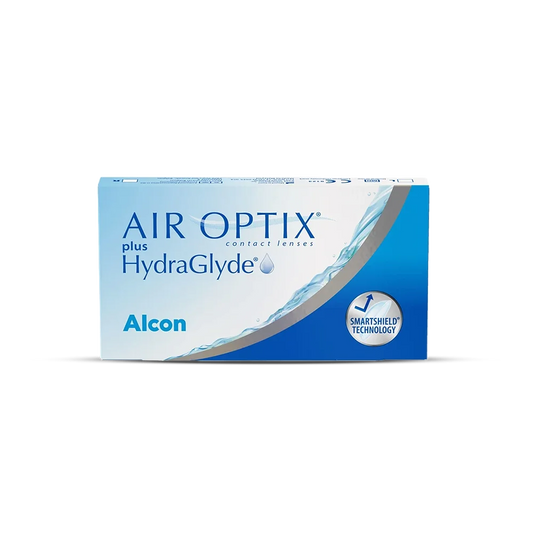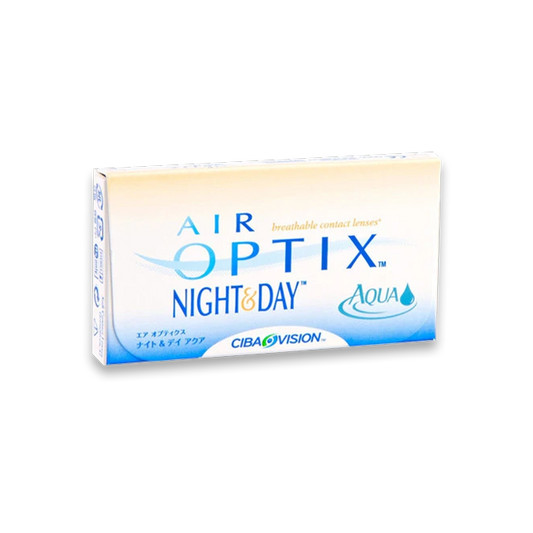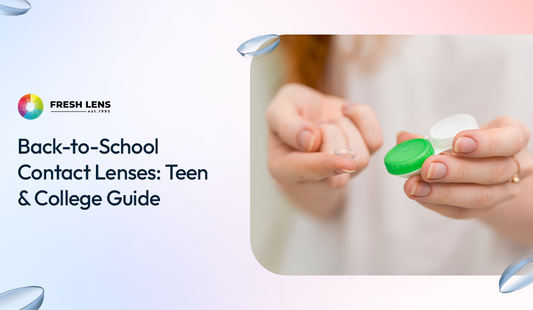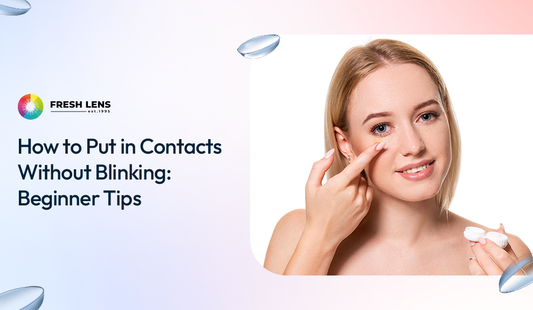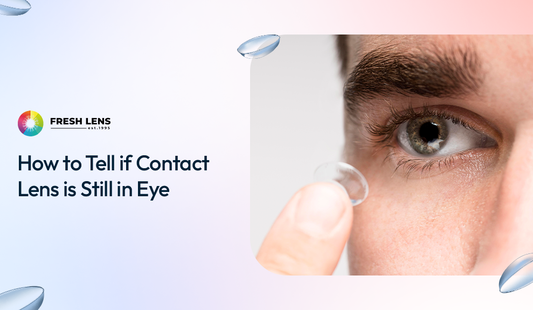
Spring brings longer days, warmer weather, and blooming flowers. But for many contact lens wearers, it also brings itchy, red, or watery eyes. Seasonal allergies can make lenses feel uncomfortable, especially when pollen starts swirling through the air.
Pollen particles are so tiny and light that avoiding them completely is almost impossible. When you wear lenses, those particles can stick to the lens surface, irritating your eyes every time you blink.
This article is designed to help you navigate spring allergies and contact lenses with confidence. We’ll explain why certain pollen types cause trouble, break down regional pollen patterns across North America (including Canada), and offer practical tips tailored to contact lens wearers. You’ll learn which lens types offer the most relief, how to adapt your lens care routine based on local pollen forecasts, and what innovations are emerging to make allergy season more tolerable. By understanding how spring allergies work and how they vary by region, you can manage symptoms more effectively and enjoy clearer, more comfortable vision.

Understanding Spring Allergies and Pollen Types
What are spring allergies?
Allergies happen when your immune system reacts too strongly to something harmless—like pollen. When pollen enters your eyes, nose, or airways, your body treats it like an invader. It releases histamines that cause sneezing, runny noses, and swollen, itchy eyes.
The main pollen types
- Tree pollen: Often the first allergen to appear, starting in late winter or early spring. Tree pollen is small and easily carried by wind, which makes it quick to settle on lenses.
- Grass pollen: Peaks in late spring and early summer. It’s common in many regions and can lead to long allergy seasons.
- Weed pollen: Usually appears later in summer and continues into fall. Ragweed is one of the most notorious culprits, and it can stick to lenses in dry, windy weather.
Why it’s worse for contact lens wearers
Soft lenses are designed to stay hydrated by absorbing water. Unfortunately, they also attract pollen, proteins, and oils from your tears. These deposits can block oxygen, make lenses cloudy, and cause irritation. In more serious cases, they can trigger allergic conjunctivitis or giant papillary conjunctivitis, both of which require professional care.
Regional Pollen Patterns Across North America
Seasonal allergies look different depending on where you live. Climate, plant species, and weather patterns all play a role. Here’s what you can expect across the U.S. and Canada.
Canada
- West Coast: British Columbia often sees tree pollen as early as February, with alder and maple leading the way. By spring, birch and poplar are common triggers.
- Prairies: In provinces like Alberta, Saskatchewan, and Manitoba, pollen usually starts in April. Tree pollen peaks in May, while grass pollen dominates in June and July. Ragweed appears in August and lasts into September.
- Eastern Provinces: Ontario, Quebec, and the Atlantic region often face long allergy seasons. Tree pollen peaks in April and May, followed by grass pollen in early summer. Ragweed lingers well into the fall, sometimes until November.
United States
- Northeast: Tree pollen peaks from late March through May. Grass pollen is strongest in May and June, while weed pollen takes over in late summer.
- South: States like Texas, Florida, and the Carolinas face the longest pollen seasons. Tree pollen can start as early as January, and weed pollen may last until November. Warm, humid conditions allow many plants to release pollen almost year-round.
- Midwest: States like Illinois, Kansas, and Wisconsin see tree pollen in March and April, grass pollen in late spring, and weed pollen in late summer. The seasons are intense but usually shorter than in the South.
- West Coast: California, Oregon, and Washington often experience tree pollen as early as January. Grass pollen follows in spring, and weed pollen is strongest from late summer into October. Rain and drought cycles affect how much pollen is produced each year.
Climate change and pollen
Warmer temperatures and longer growing seasons are extending pollen timelines across North America. Many regions now see earlier starts and longer allergy periods. That makes it even more important to track pollen forecasts and adjust your lens routine during high-pollen days.
How Spring Allergies Affect Contact Lens Wearers
Why lenses and pollen don’t mix
Soft contacts attract pollen because they hold water. Once pollen sticks to the lens, every blink rubs particles against your eye. That constant friction can trigger immune responses and leave your eyes red and sore.
Common symptoms
If you’re wearing lenses during pollen season, watch for:
- Itchy or burning eyes
- Watery or teary eyes
- A gritty, sandy feeling
- Red, swollen eyelids
- Light sensitivity
- Blurry vision that clears once the lenses are removed
Potential complications
Ignoring these signs can lead to bigger problems. Allergic conjunctivitis can cause thick discharge and painful swelling. Giant papillary conjunctivitis creates bumps under your eyelids, making lens wear uncomfortable. Both conditions require medical attention and, in some cases, a break from contact.
Practical Tips for Managing Allergies While Wearing Contact Lenses
Pick the right lenses
For most allergy sufferers, daily disposable contact lenses are the safest option. Since you throw them away after each use, they don’t collect pollen, dust, or proteins over time.
If you currently wear two-week or monthly lenses, consider switching to daily disposables during peak allergy season. Silicone hydrogel lenses may also help since they resist deposits better than traditional hydrogels.
Colored contacts can be stylish, but during allergy season, they may attract more buildup. If you want to keep your eyes comfortable, stick with clear lenses until pollen counts drop.
Keep up with hygiene
- Always wash and dry your hands before handling lenses.
- For reusable lenses, rub and rinse them with fresh solution every night.
- Replace the solution in your lens case daily and get a new case every three months.
- Avoid touching or rubbing your eyes when wearing contacts.
Use eye drops and medications wisely
Artificial tears help flush out pollen and keep eyes moist. Choose preservative-free drops for the best comfort. Allergy eye drops labeled safe for contact lens wearers can also help, but always follow instructions and ask your doctor for recommendations.
Oral antihistamines may reduce overall allergy symptoms but sometimes cause dryness. If that happens, pair them with lubricating drops to avoid discomfort.
Adjust your lifestyle
- Check daily pollen forecasts online or with apps.
- Limit outdoor time during peak pollen hours (often midday).
- Wear sunglasses outdoors to block pollen from reaching your eyes.
- Keep home and car windows closed.
- Use HEPA filters and change HVAC filters often.
- Shower and change clothes after spending time outside.
Regional Lens Care Strategies
- Different regions face unique challenges. Tailoring your routine can make allergy season easier.
- High-pollen states like Texas, Louisiana, and Florida: Stick to daily disposables and carry artificial tears. Long pollen seasons make it harder to keep reusable lenses clean.
- Canadian provinces with late ragweed peaks: Be ready to adjust routines into the fall. Many lens wearers switch to glasses more often in September and October.
- Dry, windy regions like the Midwest or Prairies: Wear wraparound sunglasses to cut down on airborne pollen and dust hitting your lenses.
Innovations and Products to Help Allergy‑Prone Lens Wearers
Contact lens technology is evolving to make life easier for allergy sufferers.
- Drug-eluting lenses: Some new lenses release antihistamines directly into the eye, reducing itching without separate drops.
- Improved materials: New silicone hydrogels are smoother and less prone to deposits, keeping lenses clearer and more comfortable.
- Advanced cleaning systems: Hydrogen peroxide-based solutions are highly effective at removing pollen and protein films from reusable lenses.
Talk to your eye doctor about whether these options are right for you, especially if your allergies are severe.
Conclusion: Take Control of Spring Allergies and Lens Comfort
Spring doesn’t have to mean putting up with itchy eyes or giving up your contact lenses. By understanding regional pollen patterns across North America and how they interact with contact lenses and allergies, you can prepare for each season more effectively. Tree pollen emerges first, followed by grass and weed pollens, but the timing varies by region. This guide has shown that climate and geographic differences play a big role in when and how you’ll experience symptoms.
The key to staying comfortable is choosing the right lens type, daily disposables provide the best defense against pollen buildup, keeping up with impeccable hygiene, and using medication or artificial tears as needed. Tailor your routine to local pollen forecasts, and don’t hesitate to take a break with glasses when counts soar. Innovative lenses and cleaning products can also help, so talk to your eye doctor about the latest options. Above all, remember that you’re not alone. Millions of people manage seasonal allergies while wearing contacts successfully every spring. With the right information and tools, you can too.
FAQ
Can I wear my contact lenses if I have spring allergies?
Yes, but you may experience discomfort. Daily disposables are usually the best option since they prevent buildup. If symptoms get severe, switch to glasses until things improve.
What type of lenses are best during pollen season?
Daily disposable lenses are ideal. Silicone hydrogel lenses are also good since they resist deposits. Avoid extended-wear lenses during allergy peaks.
How can I protect my eyes from pollen while wearing lenses?
Wear sunglasses outside, check pollen forecasts, and keep windows closed. Shower after outdoor activities to remove pollen from hair and skin.
Are allergy eye drops safe with contact lenses?
Some are, but always check the label. Many drops should be applied before inserting lenses, unless they’re specifically made for use with contacts.
When should I see an eye doctor during allergy season?
If symptoms like redness, pain, blurred vision, or discharge don’t improve, see a doctor. These may signal infection or other conditions needing treatment.
